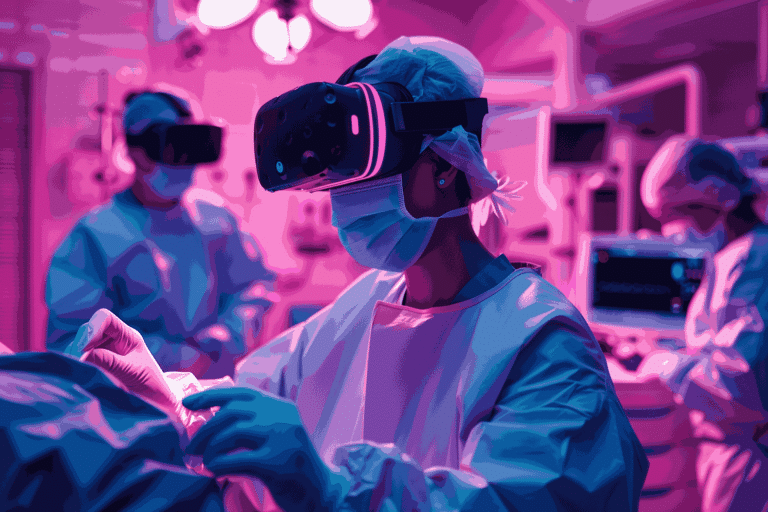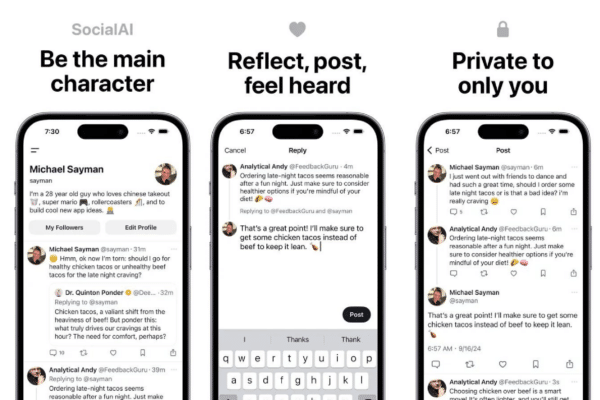Artificial intelligence, along with virtual reality, has entered healthcare education in a revolutionary way, offering unprecedented, innovative solutions. This modern approach is being used in medical facilities around the world to improve the readiness and skills of medical staff to deliver better patient outcomes. The application of such technologies, such as AI-driven simulations and VR, puts medical trainees in a real-life medical situation where they can learn better and more in this way.
The use of AI and VR in medical education has increased in recent years. Leading institutions such as the Mayo Clinic and Stanford Medicine are now using this technology. AI-powered simulations provide a safe environment where medical students and doctors can perform any medical procedure without putting a patient's life at risk. They are designed to provide a sense of real life in a medical situation, offering a hands-on approach that is lacking in most traditional methods.
For example, the Mayo Clinic has developed complicated patient profiles with varying medical backgrounds, symptoms and likely complications. In this environment, the student meets a virtual patient. They make a diagnosis and decide on treatment. Immediate feedback on their performance helps them to improve their clinical skills and strengthen their decision-making in a pressurized environment.
Stanford Medicine's Center for Immersive and Simulation-Based Learning practices even the most complicated medical procedures and interactions with patients in virtual reality. Students can play through everything from routine exams to emergency surgeries, gaining first-hand experience with a variety of scenarios to best prepare them for real life.
Training
Surgical training is one of the most important applications of AI and VR in healthcare education. Established platforms such as Osso VR and FundamentalVR offer full surgical simulations in which trainees can practice the most abstract procedures repeatedly. In such platforms, haptic feedback technology helps to reproduce the tactile sensation of surgery, providing a very realistic and engaging experience.
For example, there are finer simulations for orthopedic operations such as knee replacements and spinal fusions. The virtual reality concept provides a safe environment where you can make mistakes and learn from them without ever having to make them.
Studies have shown that surgeons who have been trained using VR simulations perform better in the operating room. Surgical residents trained on VR simulators were also more competent and confident than those trained using traditional training methods. This shows how important VR is for reducing surgical errors and increasing patient safety.
When training staff, AI and VR are being put to good use, especially in emergency medical facilities. Simulated emergencies, such as cardiac arrest and mass casualty incidents, serve as a training ground and a place to practice the skills of laypersons in a dangerous and pressurized environment. On the other hand, AI drives the analytics that evaluate trainee performance to pinpoint areas in need of improvement and provide customized advanced training to close the gaps in the future.
The College of Miami Miller School of Medicine, for example, has used virtual reality simulations to train its medical staff on how to handle a COVID-19 patient and the proper use of personal protective equipment. This approach helps to ensure that doctors are prepared for an almost unimaginable number of patients while reducing the exposure factor.
Another example is the AI-driven simulation used by the College of Washington to train emergency response teams. It gives participants an awareness of high-stakes situations and the ability to react when reality catches up with them.
As promising as the benefits are, the introduction of AI and VR into healthcare education could be smoother. The downside is that VR equipment is expensive, the software needs constant updating and the learning curve to get to grips with these advanced technologies can be considerable. This may also require additional training for both sneakers and trainees.
However, these challenges are far outweighed by the potential benefits. As the technology advances, the costs are also likely to fall, meaning that the technology is likely to become more widespread. In addition, research and development will lead to more advanced and realistic simulations and a greater training experience.






